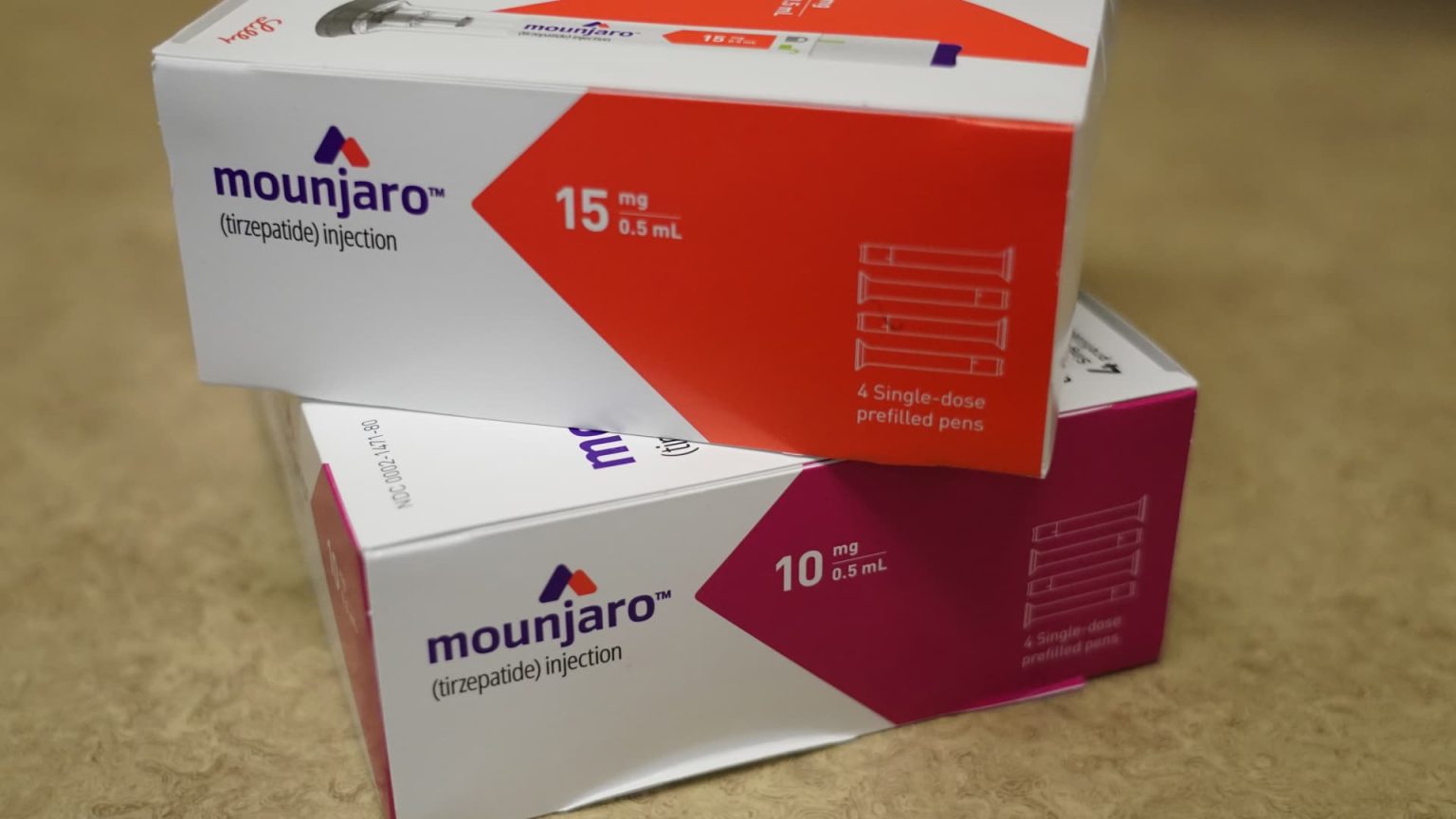Palo Alto Networks , Eli Lilly , and Eaton rallied hard over the past 12 months — up 127%, 117% and 66%, respectively. It’s wonderful news for existing shareholders. But it’s not great for investors waiting for pullbacks to start positions — unless you want to buy at or near record highs, which is something we never recommend. So, how do investors who feel shut out by the rallies get in? We r ecently analyzed our Significant Six mega-cap stocks to determine entry points based on 2024 earnings estimates. This time around let’s take a look at these winners from the portfolio, all decidedly not Big Tech. The goal: Find price levels for investors who don’t currently have positions. If you already own shares, consider your cost basis and last buy for entry points. The goal with subsequent buys is to reduce your overall cost basis. A few caveats first: We are not technical analysts. Our decision to own a stock is based on fundamental analyses of both the company and the broader economic picture. If we like the fundamentals, technical analysis can then help provide some guidance on when to buy. We’re not looking at exotic tools and indicators, we just want to identify entry points. Context is important. Look at company news, geopolitical or regulatory events, and market dynamics. Don’t look at the charts or levels in a vacuum. Rather, as you analyze the daily news flow ask yourself what it means for multiples, sentiment, and earnings revisions. Charts are just one (small) part of your research. Check the volume. Trading volume is your lie detector. You want to see volume pick up at key support levels to show there is serious demand for the stock, enough to overwhelm the selling pressure. Heavier volumes provide more confidence. Volume can be viewed simply by selecting the indicator on your trading platform and should be compared to its historical average. Palo Alto Three potential entry points: $350, $315, $280, and $256. This is a pretty wide range of levels, but consistent with rallying stock. As you can see in the chart below, $350 was a breakout level after a very brief period of consolidation — and we do mean brief, about two weeks. What we look for in a breakout is a share gain followed by a pullback that finds support at that level. If it finds support on that pullback, also referred to as a “retest,” it might indicate an opportunity to buy. Also encouraging: On the day of this breakout, there was a material increase in volume (the grey bars on the bottom of the chart and the blue arrow). If shares fell, we would want to see volume pick up again on a bounce off $350 as further confirmation that there is real buying interest. Fundamentally, the news that sparked this rally was positive earnings releases from peer cybersecurity companies Fortinet , Tenable , and Check Point . This would represent a healthy pullback of 5.4%. Should shares fall below that $350 price support, the next level of interest would be $315, which last provided resistance in December 2023. The polarity principle in technical analysis dictates that past resistance, once broken, becomes support. The reverse is also true: Past support, once broken, should be viewed as resistance. This $315 level is also close to the 50-day simple moving average (red line). That’s two technical reasons to key in on this level. A pullback to $315 would represent a roughly 15% pullback. The next level of interest, should the two aforementioned prices not hold, is $280, which provided support (blue circle) right above the 50-day moving average, As indicated inside of the blue rectangle, volume also started picking up at $280 as the stock reversed course. You’ll notice a similar dynamic took place roughly a month before (rectangle to the left). That means two times in recent months, volume decreased as it hit $280 and investors pulled back on selling, then picked back up as buyers came and drove the stock higher. There is an uptrend line (green) that starts to come into play around that level, too. When each successive declines stop at higher levels, it’s called an uptrend. PANW pulled back several times since January 2023, but every decline ended at a higher level than the prior one. If we apply the 5-year average price-to-free cash valuation of 28.23 times to the calendar year 2024 consensus estimate of $9.59 per share free cash flow, we get a price of $270. A slight premium to that five-year average is warranted, given the demand for cybersecurity services and products is rising. The $280 level represents a 24% pullback. That’s a material decline, but it’s important to zoom out a bit and acknowledge that stock was priced at $280 just about a month ago. The $256 level is next, not only because it was resistance for much of the second half of 2023, but also because it represents the 200-day moving average (yellow line). In a market-wide decline, regardless of the reason, these longer-term averages are important because they show strong support. One last thing to note: Shares are in overbought territory, as indicated by the relative strength indicator (RSI) being at about 78. Any reading above 70 is considered overbought and below 30 is considered oversold. While that can resolve itself with some sideways action, it’s worth being mindful of: It could indicate a better entry point on the horizon. Eli Lilly Two potential entry points: $617 (the 50-day simple moving average) and $541 (the 200-day simple moving average) The 50-day simple moving average is $617, a roughly 16.5% pullback from current levels, while the 200-day simple moving average is $541, a 27% decline. We’re using these averages as entry points — and the exact price will change daily — because two times in recent months the stock eventually surged higher after moving sideways for a period at around these averages. In both cases, it was the narrowing of that gap, rather than the decline to a price level, that signaled it was okay to do some buying. Consolidation, or sideways action, gives us more confidence in the level and allows overbought levels (as indicated by the RSI), to be worked off even without a pullback in the stock. While shares are well above their 5-year average P/E valuation (56 times vs. the average of 30 times), they aren’t good comparisons given the growth Eli Lilly is expected to see from its blockbuster type 2 diabetes and weight loss drugs Mounjaro and Zepboun. When adjusting for growth (by dividing the P/E by the growth rate), Eli Lilly is trading at a “PEG” (P/E/G) ratio of 1.5, below the five-year average of 1.8. You’re getting a better deal for the expected growth than we’ve seen in the past. However, don’t use the PEG ratio as your only reason to hop in here. Shares are in overbought territory, given the RSI of 88. Instead, keep a close eye on that 50-day moving average, looking for that gap between the moving average and the stock price to narrow. In addition, pay attention to positive updates from management, which often lead to upward estimate revisions. We may well learn that shares are cheaper than they appear based on future projections. Eaton Three potential entry points: $242, $215, and $200/$195. As we can see, $242 represents the current 50-day moving average, with $240 representing a level of resistance shares recently surpassed. We have the polarity principle working in our favor again. A pullback to this level is about 11% From there, $215 is a point of interest because that’s where shares close in on the 200-day moving average. A pullback to this level is 21%. Again, the important takeaway isn’t so much the level as the indicator. We are focusing on the simple moving averages, with the 50- and 200-day being the two most closely watched). The actual level will change but members should look at these moving averages as indicators of where it may make sense to step in and pick up some shares. Lastly, we would look to the $200/$195 level, as support came in on heavy volume here the last time shares saw a material sell-off. If shares hit this level again, they’ve moved below the 200-day moving average. That means we need to determine if there was a fundamental reason to break that longer-term support line. A pullback to this level is about 27%. Note also that a move to around the $200 level would put shares back at their 5-year average P/E valuation of about 20 times 2024 estimates of $10.15 per share. Given the rapid push toward digitization, electrification, and reindustrialization, a premium to that 5-year average is warranted. The PEG ratio stands at 2.2, not that far above the 5-year average of 2. (See here for a full list of the stocks in Jim Cramer’s Charitable Trust.) As a subscriber to the CNBC Investing Club with Jim Cramer, you will receive a trade alert before Jim makes a trade. Jim waits 45 minutes after sending a trade alert before buying or selling a stock in his charitable trust’s portfolio. If Jim has talked about a stock on CNBC TV, he waits 72 hours after issuing the trade alert before executing the trade. THE ABOVE INVESTING CLUB INFORMATION IS SUBJECT TO OUR TERMS AND CONDITIONS AND PRIVACY POLICY , TOGETHER WITH OUR DISCLAIMER . NO FIDUCIARY OBLIGATION OR DUTY EXISTS, OR IS CREATED, BY VIRTUE OF YOUR RECEIPT OF ANY INFORMATION PROVIDED IN CONNECTION WITH THE INVESTING CLUB. NO SPECIFIC OUTCOME OR PROFIT IS GUARANTEED.
Palo Alto Networks, Eli Lilly, and Eaton rallied hard over the past 12 months — up 127%, 117% and 66%, respectively. It’s wonderful news for existing shareholders. But it’s not great for investors waiting for pullbacks to start positions — unless you want to buy at or near record highs, which is something we never recommend.
Read the full article here





